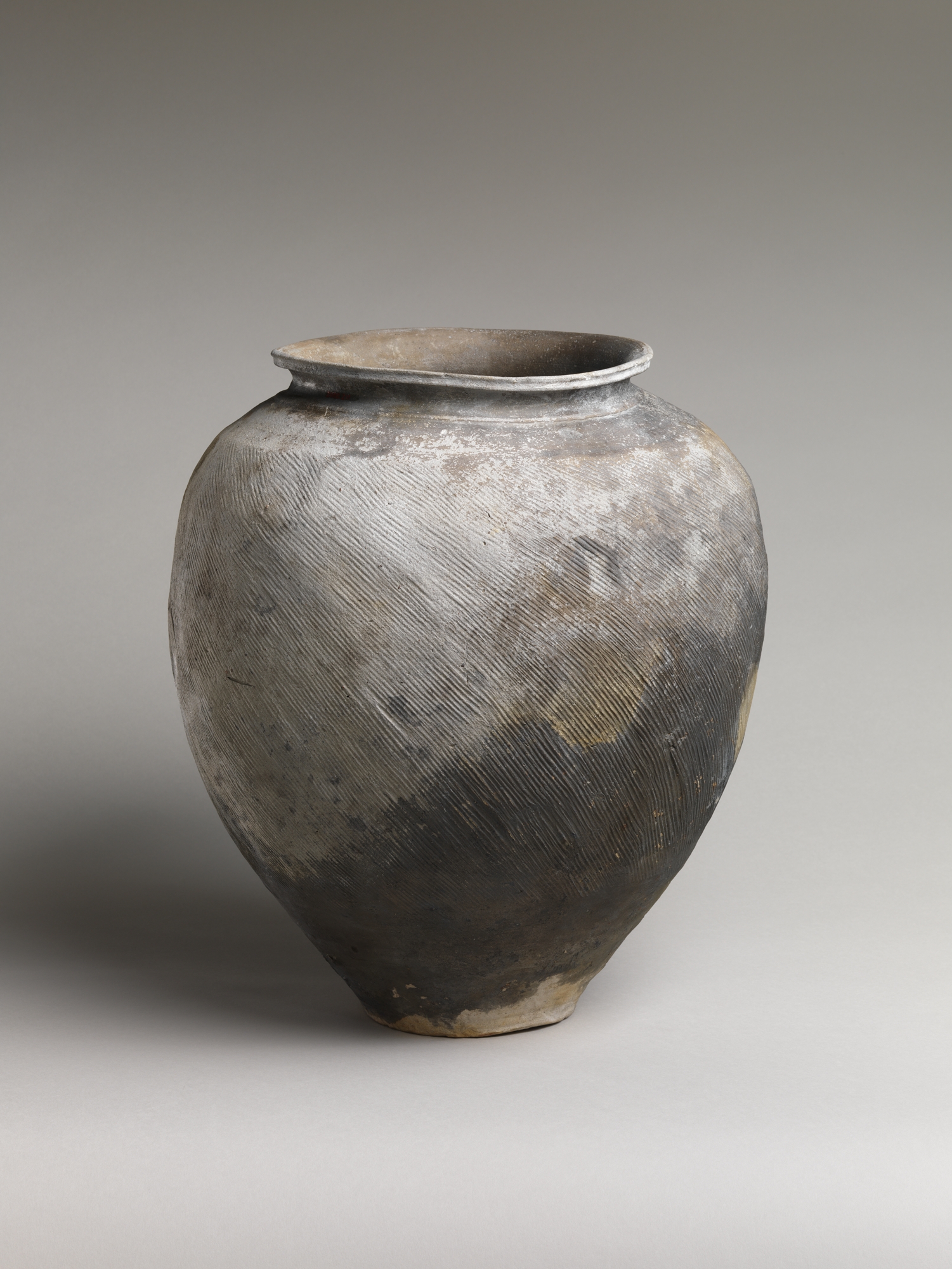Jar
Not on view
Said to have been found under water at Sado Island in the Sea of Japan, this jar retains traces of mollusk encrustation on the surface, both inside and outside. It was made by coiling and shaped by the paddle-and-anvil method. The firing in an inclined tunnel kiln produced an uneven reduction effect, which can be seen on the surface of the pot.
The production of Suzu ware began only in the mid-twelfth century; an early piece such as this is exceptionally rare.
Due to rights restrictions, this image cannot be enlarged, viewed at full screen, or downloaded.
This artwork is meant to be viewed from right to left. Scroll left to view more.



